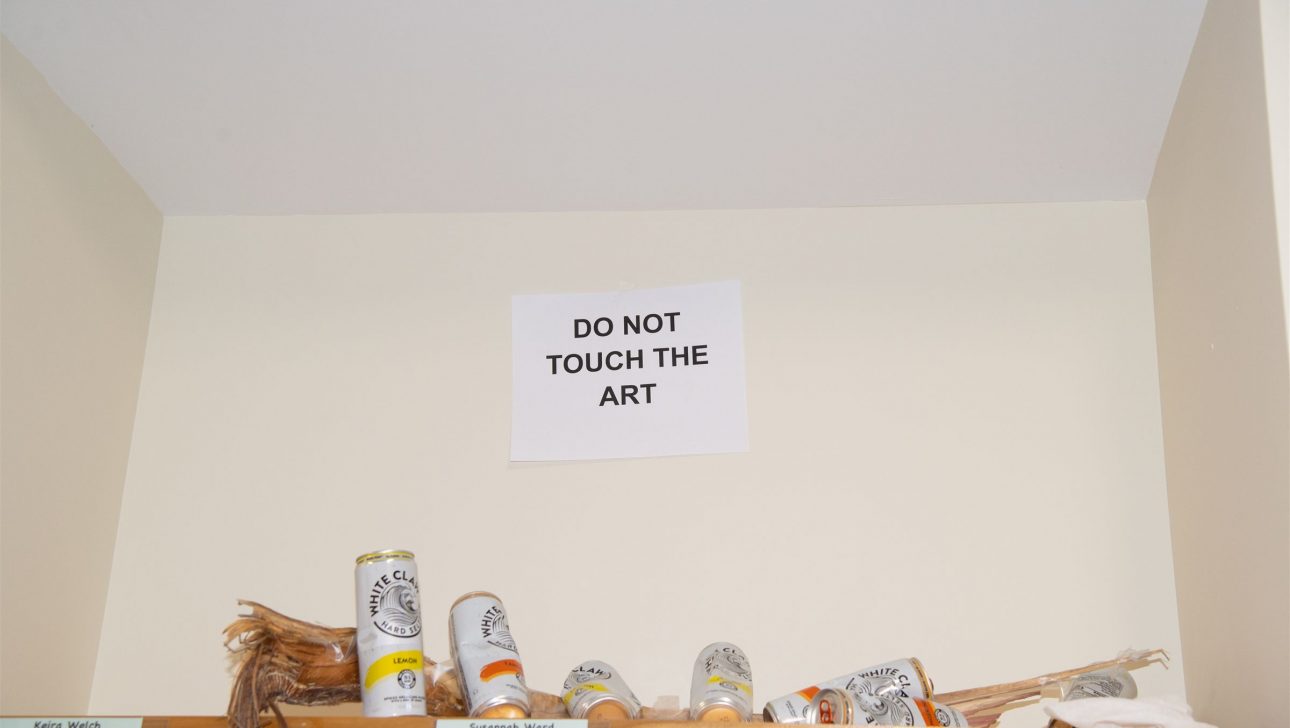Using nature and art as a pathway to talking about social justice and cultural issues, middle school Spanish teacher Autumn Andrade-de León, created a new instructional unit based on a MOMA professional development program entitled “Art and Inquiry,” which she attended virtually this summer. Run by MOMA teaching staff, the program explored ways of leveraging art in other disciplines.
“I always thought art was an amazing open-ended vehicle for so many things. I went to an arts high school, which is perhaps why I’ve always seen art as fertile ground for expression, vocabulary development, critical thinking, and understanding how interconnected the world is,” she said.
Knowing students would be studying much of the time outside due to the pandemic, Autumn began the multi-modal unit by having students forage on campus for materials to turn into art. The project urged them to define for themselves “What is art,?” as they manipulated what they’d found into original pieces.
The foraging and creation stage ended up going for six days instead of two days as planned to accommodate the students’ need for more time. “They wanted to see it through, and I didn’t want to cut it short,” said Autumn. “The impulse to do a thorough job in class is not one that should ever be curtailed!”
Among the foraged supplies students collected were twigs, leaves, rocks and berries as well as some surprises including rusty nails, and soda and White Claw hard cider cans. Supplies in hand, students began diligently working on the art itself. Some students even created personas as artists as the project took on a life of its own. They wrote museum labels in Spanish that included QR codes for English-only speakers to access the information. Once their artworks were completed, students created a gallery installation on the third floor of the middle school in their self-named “Museo del arte DCD.”
Though including hard cider cans in the display merited an explanation to faculty viewing the exhibit, Autumn commented, “this is our modern world; this is part of what you find when you’re walking through the pine grove. Furthermore, it is a statement to upcycle trash to elevate both the positive and negative aspects of man’s encroachment on nature.”
After the museum installation, a guest speaker from the MOMA Teaching Program zoomed in to talk about the artist Ruth Asawa, a Japanese-American who was imprisoned with her family in an internment camp after Pearl Harbor. While living with her family in a converted horse stall in the camp for months on end, art became a kind of survival instinct, Autumn explained. Asawa was forced to make camouflage nets in the camps. Later, Asawa went on to reuse that skill to make masterful three-dimensional woven sculptures. Autumn notes “This had strong echoes in the work the students did. They used what they had at their disposal to create something beautiful and I believe they were able to, if only briefly, walk in the experience of someone with whom their connection may not have been so obvious.”
Bringing a powerful professional development opportunity to the classroom was “so impactful” she said. “I have pages of ideas I created over the four days, and have only used a few of them,” explaining that bringing some of these ideas to life doesn’t always go well. “Not all people are enthusiastic about this kind of freedom of domain, that there is no right answer, that one’s personal perspective is the right answer, but it’s important for young people to have a chance to feel validated and to make their perspectives and voices heard.”




